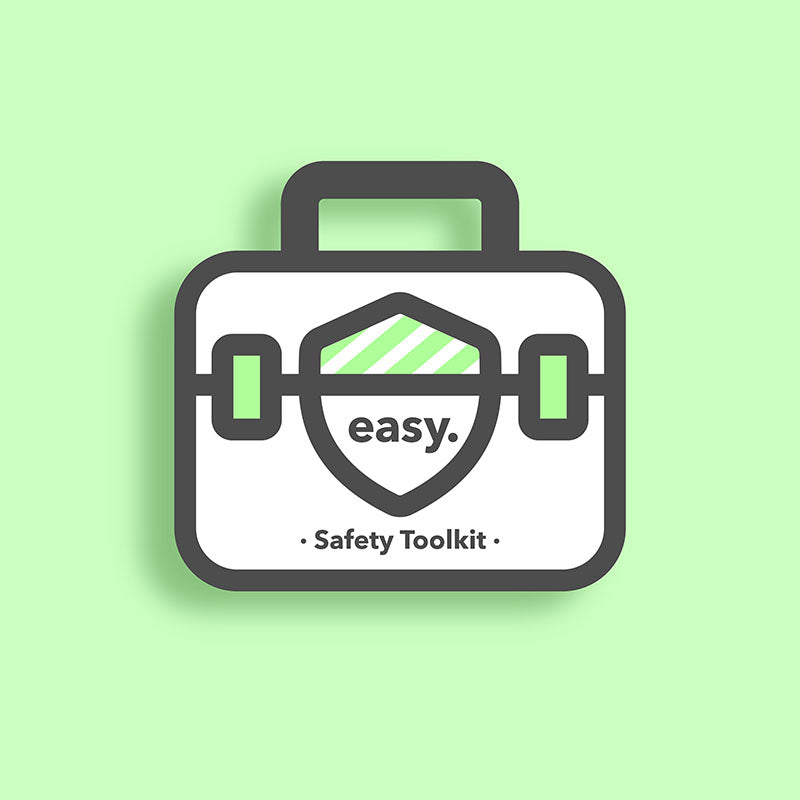
A Simple Guide to Health and Safety Requirements for Your Business
What Your Business Needs to Stay Safe and Compliant:
Health and safety laws apply to all businesses. As an employer, or a self-employed person, you are responsible for health and safety in your workplace. The approach you take should be proportionate to the size of your business and the nature of the business activity. For most small, low-risk businesses the steps you need to take are straightforward, all that is required is a series of practical tasks:
1. Appoint a competent person to lead on health and safety.

If you run a low-risk business, for example a Hair Salon or Barbershop, Cafe or Restaurant, Coffee Shop or Tattoo Studio, it’s likely that you or another employee can carry out health and safety duties as you are familiar with the workplace and the risks associated with it. Someone with knowledge, skills, and experience of the business is ideal. If you’re a large or high-risk business, you may need to seek extra help from a health and safety consultant.
2. Prepare a Health and Safety Policy.
It is good practice for all businesses to have a health and safety policy. A health and safety policy explains how you, as an employer, will manage health and safety in your business. If you employ five or more people in your business, there’s no way around it, you must have a written health and safety policy. Find our ready-to-use health and safety policy template here.
3. Complete Risk Assessments.
To control risks in your workplace, you need to think about what might cause harm to people and decide whether you’re taking reasonable steps to prevent it. You're probably already taking steps to protect your employees, but your risk assessments will help you decide whether you have covered all you need to.
Certain groups, such as young workers or pregnant employees and new mothers, are additionally protected under health and safety law. You need to take additional steps when taking their needs into account.
4. Complete a Fire Risk Assessment.
If you are responsible for a building, for example an employer, owner or occupier of a premises that isn’t a single private dwelling (a private home), you need to make sure a fire risk assessment is completed. This will identify fire risks and hazards in your premises and help you take appropriate action. In support of the fire risk assessment, you must also carry out several mandatory actions, such as an annual fire drill, weekly fire alarm tests and more. These can all be recorded using a fire safety log book.
Find our full range of Fire Safety Templates here.
5. Keep an open dialogue between management and staff about health and safety matters.
Consultation is a two-way process. Allowing employees to raise concerns, influence decisions and put ideas forward on managing health and safety is key. Keeping an open dialogue will help to promote health and safety culture within your business, will help maintain health and safety knowledge and also keep it at the forefront of everyone’s mind. Ways to do this include informal group discussions, formal safety briefings and 1-2-1 meetings. Check out our range of health and safety guidance for help with this.
6. Provide staff with safety information and relevant training.
You need to provide appropriate information and any necessary training for all members of staff, the extent of which you should identify in your risk assessments. If you’re a low-risk business, providing simple information or instructions to your employees is likely to be enough. Check out our range of health and safety campaign posters.
7. Have the correct welfare facilities.

You must have welfare facilities (toilets, drinking water and somewhere to rest), a clean workplace (with reasonable temperature, ventilation, lighting and seating), and a safe workplace (well-maintained equipment, clear traffic and public routes).
8. Provide first aid equipment.

You must make sure employees can get immediate help if taken ill or injured at work. Make sure you have a suitably stocked first aid kit and an appointed person to take charge of it.
9. Complete an Accident Report Form for work related incidents.
You must report certain injuries, near-misses, and work-related illnesses to the HSE. Recording all accidents on an accident report form can be helpful in identifying patterns or trends, thus helping to manage risk in your workplace. They can also be invaluable when dealing with insurance claims.
10. Display the HSE law poster, or distribute the leaflet.

The HSE law poster and leaflet both explain British health and safety laws and list what workers and employers should each do. You can provide each worker with the health and safety law leaflet or display the poster in a suitable location where workers can read it.
The health and safety law leaflet is included FREE as part of our health and safety template bundles.
11. Get insurance, including employers liability insurance.

If your business has employees, it’s likely you’ll need employer’s liability insurance. If an employee is hurt because of the work they do for the business they can claim compensation. Employers’ liability insurance will help cover the costs of any legal and compensation expenses from employee insurance claims. This certificate must be displayed in a prominent location, where staff can access it.

Streamline Health and Safety in Your Business with Comprehensive Template Bundles
Each health and safety template bundle is packed with all the essentials like safety policies, fire safety templates, risk assessments, guidance, posters and more. Plus, a handy user guide explaining what the documents are and how you should be using them is also included.






